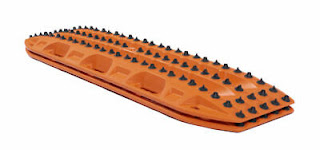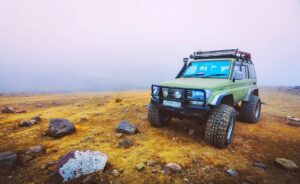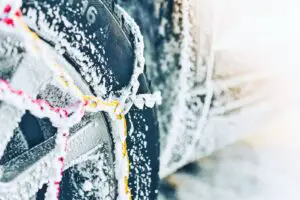Off-roading on sand is an extremely fun activity. But do you think it’s easy as it looks. Hell no.
Absolutely you should know the following things before putting your vehicle in to sand, otherwise you will end up bogging down or rolling your vehicle on sand.
In this guide I’ll go through all the things you should know before entering a sand terrain.
Below we gathered quick tips for sand off-roading. After that I’ll go to the detailed guide.
Contents
Quick Tips for Sand Off-Roading
- Check vehicle’s fluids, fuses etc. before going off-roading.
- Understand the type of sand you are going to drive.
- Reduce tire pressure for about 16psi.
- Don’t spin wheels unnecessarily.
- Bring recovery gears with you.
- Try to keep necessary speed to take the advantage of momentum.
- Use 4*4 high range for a long run to avoid unnecessary heating up in the transmission unit. If you get in to a sand dune use 4*4 low range.
- Don’t try to take sharp turns.
- Don’t try to apply the brake and stop vehicle quickly.
- If you stuck don’t spin your wheel. You will dig down more.
- When initiating to move forward take a few meters back and do it.
- Try to stop the vehicle in an inclined place.it will help to initiate movement.
- When declining don’t try to break. Try to keep vehicles steady and vertical to the hill.
- Enough gas and lights for night.
- Don’t speed up on top of sand dunes if ,you don’t know what’s on the other side.
Sand types.. is it really important ??
When going off-roading on sand there are two main types of sand terrains you may find. You can go on a beach off-roading or a desert off-roading. So the type of sand in these terrains are different.
On beaches you can find wet sand. Sand may seem dry from the surface due to sunshine.but due to tides , under sand may be wet and boggy.
So you should be very careful about that when beach off-roading. But this may also vary with the distance.
There are gravel mixed sand, sand dunes and vegetation also on the coastal sides.
In deserts the case is different. Due to heavy sunshine, the sand in deserts are dry and grainy….
Here I’m going to give you general tips for off-roading on both beach and desert and extra special tips for off-roading on the beach.
Those extra tips will also be very very important for you to save you and your vehicle from a lot of troubles.
So go through the article to the end if you are serious about off-roading on sand.
Tire pressure.
According to experts, tire pressure is one of the very important factors that decide whether you bog down on the sand terrain or move on smoothly.
Reduce your tire pressure to 18 – 16 psi before entering the beach or desert.
If you get stuck and bogged down in sand you can reduce your tire pressure more for about 10psi. This will increase tire footprint.
Here this will increase the surface area contact with the ground and reduce bogging down through loose sand. This increases the traction.
Most of us go mad when we enter a beach due to the stimulations of the environment and do lose our common sense. Due to that we may get into a lot of troubles.
Why am I saying so ? Let’s get in to that.
Momentum will be your best helper.
In sand off-roading try to keep necessary speed every time. Not like other terrains, sand gives a huge resistance for moving. If you have ever walked on a beach, I’m pretty sure you had experienced it yourself.
Not like walking when you take your vehicle to the beach or even to a desert your vehicle is trying to bogging down in sand with the wheel spinning.
If you want to move forward, exactly you should keep a good momentum.
Try to engage in one gear to reduce gear changing in the middle of terrain.
As I said earlier, if you want to keep a good momentum you should minimize gear changing on sand.
You can get into your preferred gear as quickly as possible and then stick to that gear throughout the track as much as possible.
From this technique you can ensure a smooth riding on sand reducing the chance of getting stuck.
Don’t try to take sharp turns.
When you are driving on the sand this may be the huge mistake done by beginners and even some experienced drivers.
If you turn your front wheels sharply on sand it courses to stop your vehicle suddenly. If this happens when you are driving at some speed your vehicle will rollover suddenly.
Because of that, try to drive in a straight line as much as possible.
You can watch videos of this happening to many sand off-roaders in you tube.
If you go for a beach ride with your family, don’t allow your children or any one to watch out through sunroofs while putting their heads out of the vehicle. I think you got my point.
If you want to turn your vehicle take the turn with a large arc.
Don’t try to stop the vehicle quickly.
As you know while driving on the sand one of the biggest challenges is bogging down. So if you try to stop your vehicle quickly by applying brakes, your wheels try to bog down through smooth sand to take the necessary resistance for stopping.
It’s not a problem for stopping the vehicle
But the problem occurs when you try to move again after stopping.At that point your wheels will spin and dig down more and you will end up with stucking.
To avoid this situation you can give vehicles to stop themselves by just releasing the gas or applying brakes smoothly.
Due to the high resistance given by sand to moving vehicles, it will stop in a less time than on a normal road.
But keep in mind this is a general tip and in a case of emergency you can apply brake and stop your vehicle quickly.
Keep a proper distance with other vehicles if you are going as a group. So that you may not want to apply brakes suddenly to stop your vehicle.
Initiate movement getting a few meters back.
If you stop your vehicle on plane sand without any descending in front of you and if you feel like your wheels tend to spin freely without traction then rivers your vehicle 2 or 3 meters back on the same way and then again start moving forward.
Because sand on few meters back got tight due to the weight of vehicle.so they are less tend to bogging down and that sand will give the necessary traction.
Try to stop vehicles in a place where decline is ahead.
Gravity will help you to initiate movement smoothly without bogging down on sand.
Don’t try to spin your wheels unnecessarily.
According to the above mentioned tips now you have a good idea that if you spin your wheels freely on sand you will end up joining the digging club. ;D
So never ever do it on sand.
What should I do if I bogged down and stuck on sand ?
If something went wrong and you are stuck on sand, the first thing you should do is stop accelerating your vehicle.
If you accelerate more, it will spin your wheels freely on sand and dig you furthermore in sand. It will only make the situation worse.
Then you can reduce your tyre pressure furthermore for about 10psi.not more than that.Because then your tyre may not seat with your rim.
After that you may have to do some sand work to get your vehicle out.In this situation your recovery gears come in handy.
What are the Recovery gears should I use when stuck while off-roading on sand ?
- Long handle shovel
- Recovery tracks/ maxtrax
- Snatch strap and D shackles
- Winch dampers
- Winch
- Jack(bottle or hi-lift jack)
If your wheels bogged down on sand you have to clear out sand around your wheels. You can bring a shovel for that purpose.
A long handle shovel with a straight neck is suitable because you can use it easily to dig under your vehicle.
Clear out sand around all wheels. You can use your maxtrax also as a shovel to remove sand.Otherwise this technique will not help to get out of sand.
You can try to take out your vehicle just by clearing out sand around tires and reducing tire pressure.
If that’s not work for your situation. You can try the technique below.
Using recovery tracks.

Recovery tracks
Place the recovery tracks under wheels with an angle.not flat.keep the tracks with rows of hard moulded lumps(ramp side) in to up and wedge under wheels.Then move all bystanders out of the way.
Now put in to 4WD low range and slowly accelerate.
It allows your wheels to grip the track and slowly come out. If your wheels start spinning stop immediately and keep tracks again in place properly and try again.
Using snatch straps.
If recovery tracks do not work for you, then you can use snatch straps and another supporting vehicle to get out.
This is the easiest way to recover a bogged vehicle but you don’t have control of the vehicle when taking out.
So you must take safety precautions when doing this. Kinetic energy storing in the strap in it’s maximum stretch comes handy here.
Attach one end of the strap to the rear rated recovery point of the recovery vehicle and the other end with the front rated recovery point of the bogged vehicle.
You can use D shackles for attachment.(assuming that you want to recover the bogged vehicle forward.) Never ever attach it to the tow ball. It can lead to accidents.
Then reverse the recovery vehicle to the bogged vehicle.(about 5m distance among vehicles).keep snatch strap in S shape and attach a winch damper(blanket/towel/jacket) in the middle of the strap.(this will force the strap to ground and prevent flying out metal objects if something went wrong and break the strap).
When both drivers ready start to spin your bogged vehicles wheels slowly. Recovery vehicle can now snatch the bogged vehicle out.(can use cb radio or hand signals as a communication method between two vehicles)
After recovering, check your strap carefully and clean it and keep it safe.
Recovery using winch.
If you don’t have a recovery vehicle for your support you can use your winch and recover your vehicle.
I wrote an in depth guide on how to recover your vehicle using winch. To read that click here.
Bonus tips for beach off-roaders.
Stay away from water every time.
Sea water is extremely bad for your vehicle.Saltiness of sea water is causing rust and corrosion of your vehicle body and chassis fast. This water can cause damage to your vehicle’s electronic components like ECU s.
So you may end up damaging your vehicle if you contact with sea water. If your vehicle contacts with sea water wash thoroughly with fresh water as soon as possible.
Check vehicles before going off-roading.
Fill the gas tank before going off-roading every time. Especially off-roading in sand will burn a lot of gas because sand gives a huge resistance for the movement of vehicles.
Check coolant, brake oil, engine oil and transmission fluid levels and fuses.
Check terrains before off-roading.
Don’t try to drive fast in unfamiliar terrains. Don’t speed up on top of the dunes or steep hills without knowing what’s on the other side.
Tips for climbing steep and declining.
Decide a preferred gear at the beginning and drive in that gear at a steady speed to the top of the steep without breaking the momentum.
If you change gears or release gas and throttle, again it will break the continuous power to the driving wheels and sudden torque received when throttling .so the driving wheels tend to spin and dig the sand.
If you feel like losing traction at the top of the steep steer side to side and try to keep traction.
If you were unable to reach the top, slowly come back in the same pathway and try again with taking more momentum.
When declining a steep don’t try to apply brake.Your vehicle may rollover.
Stick to a straight pathway vertical to the steep and maintain a steady speed with gearing techniques. Try to keep your back of vehicle straight by maintaining the speed of vehicle.
Never try to lock your wheels from spinning by applying brakes.
Here I take you through a common guide on sand off-roading. Most of the things here are related to beach riding.
But you can use the knowledge you get from here to off-roading on deserts also. Using these tips and adding some common sense while driving will give you a full of fun sand off-roading journey.
Comment below and share your experiences with me. I really like to hear your off-roading experiences and your own techniques.
Have fun and safe off-roading !!







